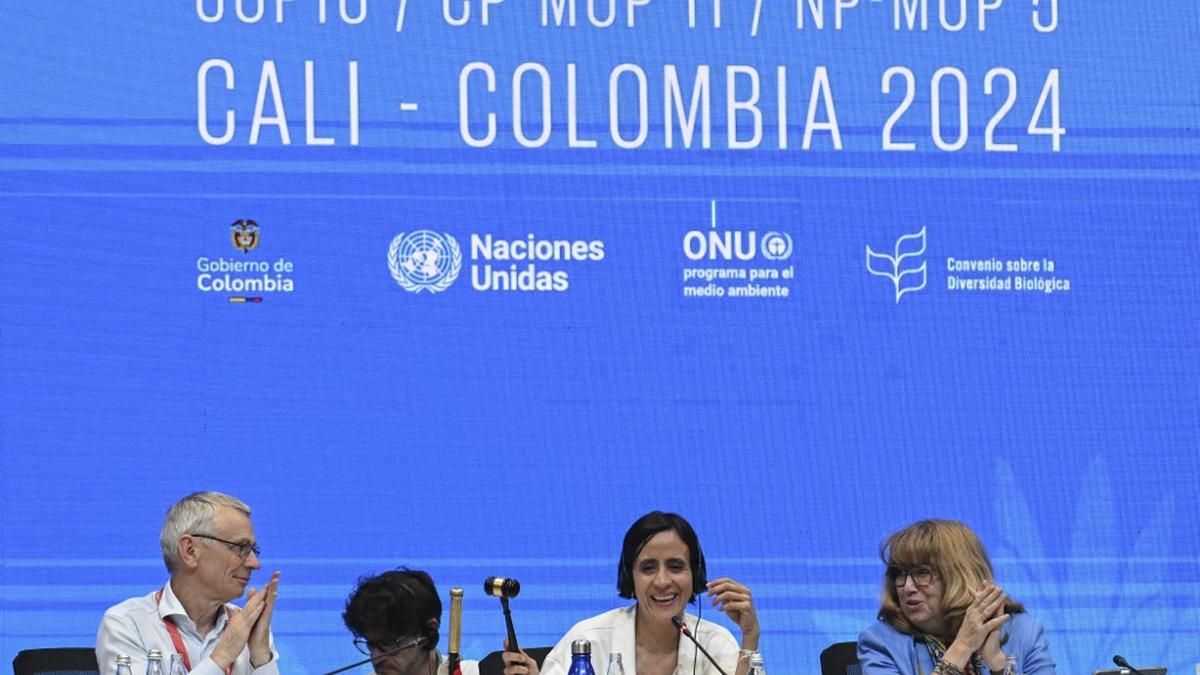Key Takeaways from COP-16: Convention on Biological Diversity

- 03 Nov 2024
In News:
The 16th edition of the Convention of Biological Diversity (CBD) in Cali, Colombia was concluded.
Key Agreements at COP-16
- Establishment of the Cali Fund
- Purpose: To ensure equitable benefit-sharing from the use of Digital Sequence Information (DSI) on genetic resources.
- Focus on Indigenous Communities: At least 50% of the Cali Fund will support Indigenous peoples and local communities, with special emphasis on women and youth.
- Creation of a Permanent Subsidiary Body
- Inclusion of Indigenous Peoples: A new body will ensure the active participation of Indigenous groups in biodiversity conservation and policy discussions.
- Resource Mobilisation Strategy
- Target Funding: The conference agreed on a strategy to secure USD 200 billion annually by 2030 to support global biodiversity initiatives.
- Kunming Biodiversity Fund: A contribution of USD 200 million from China to support biodiversity funding.
- Management of Invasive Alien Species
- New Guidelines: Proposals for databases, cross-border trade regulations, and enhanced coordination with e-commerce platforms to manage invasive species.
- Identification of Ecologically or Biologically Significant Marine Areas (EBSAs)
- Enhanced Process: COP-16 agreed on an evolved process for identifying EBSAs, a critical aspect of marine conservation.
- Global Action Plan on Biodiversity and Health
- One Health Approach: Approval of a global action plan to curb zoonotic diseases, promote health, and safeguard ecosystems.
India’s Contribution at COP-16
Updated National Biodiversity Strategy and Action Plan (NBSAP)
- Financial Commitment: India plans to invest ?81,664 crore (USD 9.8 billion) from 2025-30 on biodiversity conservation.
- Focus Areas: India highlighted efforts such as the establishment of the International Big Cat Alliance, expansion of Ramsar sites, and increased spending on biodiversity from 2018-2022.
International Finance Support
- Global Partnerships: India emphasized the need for international finance to meet biodiversity targets, particularly under the Kunming-Montreal Global Biodiversity Framework (KMGBF).
Key Outcomes from COP-16
- New Mechanisms for Biodiversity Conservation
- Cali Fund: Ensures equitable benefit-sharing from genetic resources.
- Permanent Subsidiary Body: Facilitates the inclusion of Indigenous peoples in policy-making.
- Funding and Resource Mobilization
- USD 200 Billion Annually: Strategy to secure funding for biodiversity initiatives.
- Redirecting Harmful Subsidies: Agreement to redirect USD 500 billion in harmful subsidies by 2030.
- Biodiversity and Human Health
- Global Action Plan on Biodiversity and Health: Aimed at preventing zoonotic diseases and promoting human, animal, and environmental health.
Challenges in Biodiversity Protection
Key Threats to Biodiversity
- Population Growth and Resource Demand: Increasing population and demand for biological resources lead to over-exploitation.
- Habitat Degradation and Climate Change: Destruction of ecosystems and climate change threaten species globally.
- Invasive Species: Introduction of non-native species harms local biodiversity.
- Government Policies: Policies that prioritize development without environmental safeguards contribute to biodiversity loss.
Gaps in Global Biodiversity Framework
- Weak Legal Language: Concerns about insufficient legal protection for critical ecosystems.
- Lack of Implementation Mechanisms: Absence of mandatory review mechanisms for biodiversity targets.
Kunming-Montreal Global Biodiversity Framework (KMGBF)
Framework Overview
- Adoption: Adopted at COP-15 in 2022, the KMGBF sets 23 action-oriented targets for biodiversity by 2030.
- Key Goals: Includes restoring 30% of degraded ecosystems and reducing the risk of invasive species by 50%.
- Living in Harmony with Nature: The framework envisions achieving biodiversity targets and living sustainably with nature by 2050.
Way Forward: Moving from Agreements to Action
- Participation of Stakeholders - Inclusive Approach: Ensuring the involvement of all relevant stakeholders, including governments, businesses, and local communities, in biodiversity conservation.
- Integrated Resource Management - Ecosystem Approach: Promoting a holistic approach to managing biodiversity and natural resources.
- Strengthening Governance - Good Governance Practices: Encouraging better governance to prevent unregulated exploitation of natural resources.
- International Financial Support - Alignment with Financial Institutions: Aligning global financial institutions and multilateral development banks with biodiversity conservation goals.
